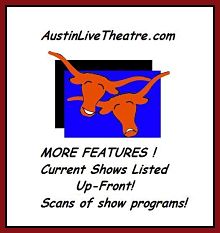
The New York Times' Public Editor Clark Hoyt muses about the reactions to Terrence McNally's homosexual interpretation of the Gospel "Corpus Christi," ten years ago and today. And especially the outrage of some, including Bill Donohue, the president of the Catholic League for Religious and Civil Rights, at the NYT's sympathetic review of the current production. Excerpts:
Ben Brantley, the Times theater critic, was not impressed in 1998, calling “Corpus Christi” about as “threatening, and stimulating, as a glass of chocolate milk” and a “lazy” piece of writing. Donohue did not object to that review.
Jason Zinoman, who reviewed the revival for The Times, seemed to find it a bit more appealing, saying “there are moments of hard-won sentiment that will win over the biggest skeptic.” Zinoman called the play “an earnest and reverent spin on the Jesus story, with some soft-spoken, gay-friendly politics thrown in.” Donohue was infuriated because he said no play that depicted Jesus as sexually active, whether with men or women, could be “reverent.” Zinoman defended his description. He said the play was “very faithful” to the plot of the New Testament. But he said it had a “point of view. It’s certainly pro-gay-marriage and it’s intolerant of prejudice against gay people.”. . . .
I found Donohue’s language overheated, but I wound up thinking that he had put his finger on an interesting issue: how a newspaper like The Times, which devotes great space and energy to covering the arts, should deal with the frequent collisions between art and religion. The argument, as it did with “Corpus Christi” 10 years ago, often gets framed as a First Amendment fight between those championing freedom of speech and those seeking to stifle speech they object to. But lost in all of that can be the deeper story of the spiritual and religious tensions that gave rise to the art in the first place and the sensibilities of religious readers who may be struggling with aspects of their own faith. . . .
In a different context recently, Bill Keller, the executive editor of The Times, told me that he believes The Times is a liberal newspaper “in the sense that a liberal arts college is liberal — generally secular in outlook, disinclined to take things on faith, nondogmatic, tolerant of and curious about a wide range of views and behaviors.” I think that is a good definition — and that editors need to be sure that the wide range includes the views of the religious."
[Click for full text of op-ed piece]




No comments:
Post a Comment